Art Paris Art Fair
Intimacy and illusion in a range of contemporary photography seen at the show

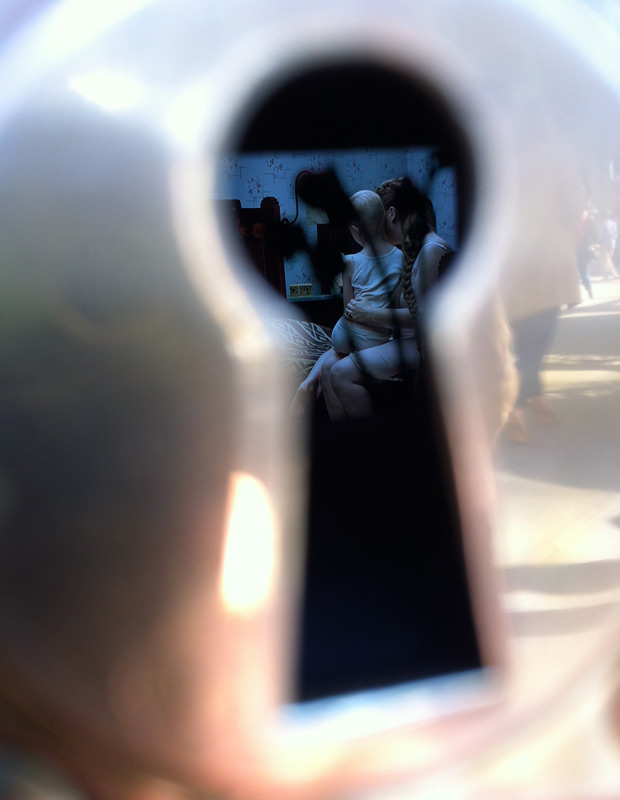
Representing 120 galleries from 16 countries, the spring Art Paris Art Fair offers a prime opportunity to observe the latest tendencies in the modern and contemporary art markets. This year we found particular attention paid to photography, unveiling the intriguing progress of the exploration of intimacy.
The images that stood out to us traced a progression from a series of building facades taken in 2007 to today’s more revelatory shots exposing the private lives of those that inhabit such spaces. Some artists delved even deeper into the idea of home documentation with installations set up to peep through a keyhole.
Dutch photographer Erwin Olaf has built an enclosed booth, inviting visitors to sit on the chair in front of closed doors and look into the keyhole. As part of the PHPA 2011 project (Prix photo d’hôtel photo d’auteur—Hotel photos awards), Elene Usdin displayed the sketches she shot in hotel rooms through a peephole in the door of room 18 constructed for the exhibit.
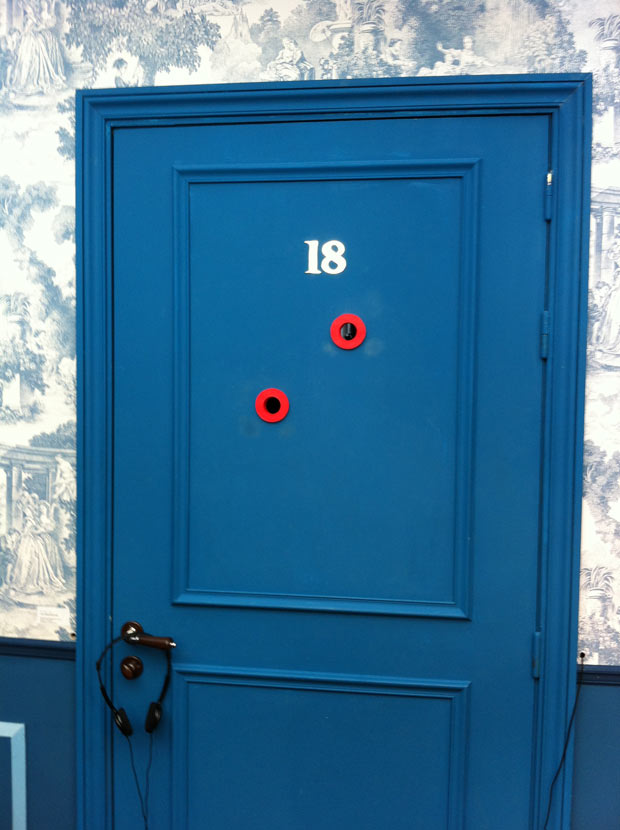
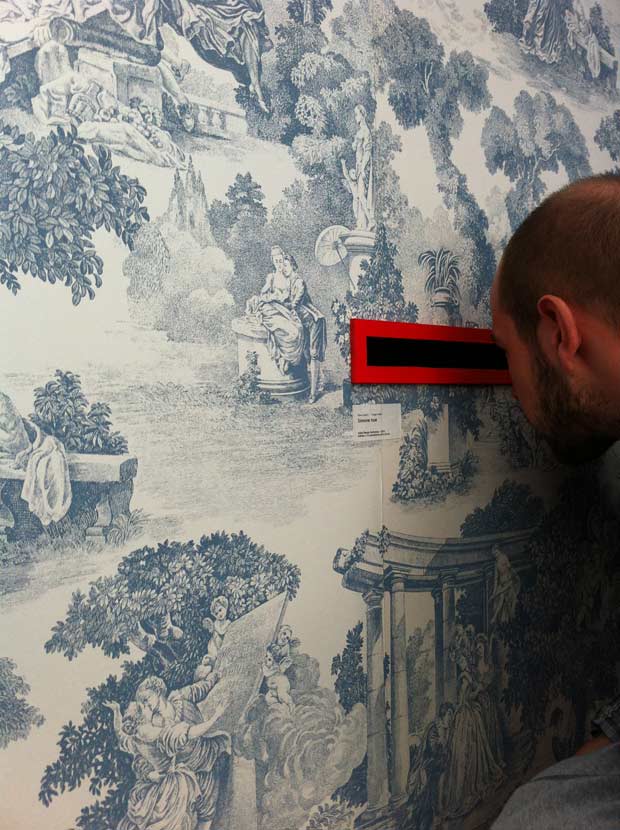
As the camera pierces a sense of intimacy with the keyhole device, the practice of portraiture heads in the opposite direction as pictures seem to zoom in on the face, often depicting the subject blurred, heavily made up or disguised.
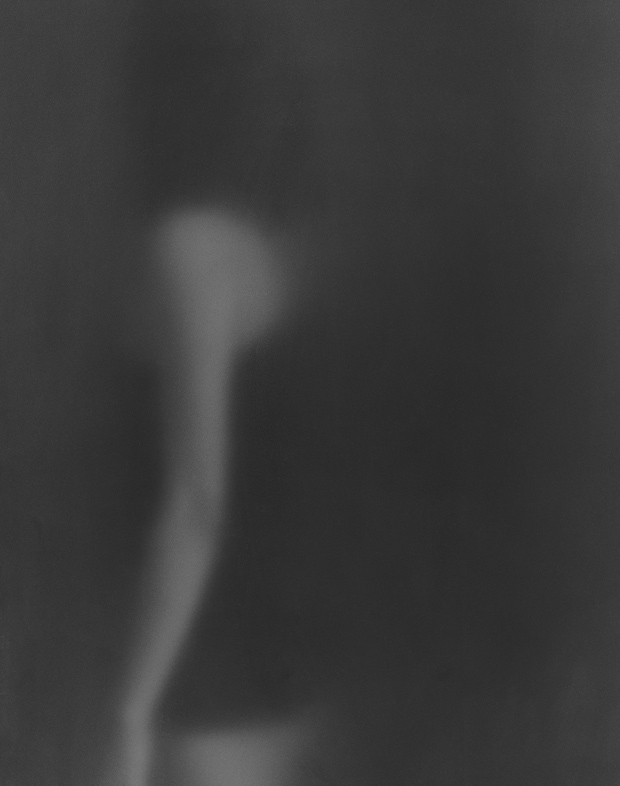
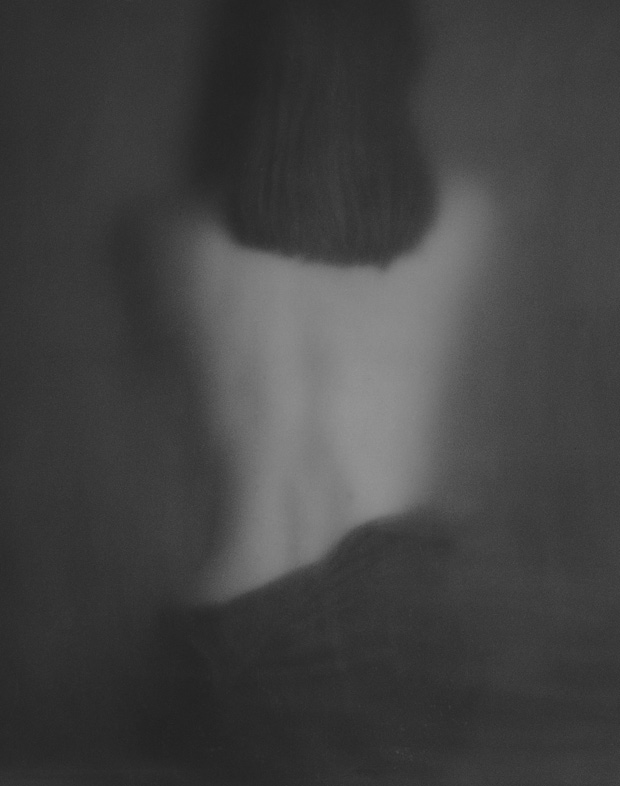
Korean artist Byung-Hun Min is gaining fame with his gray-tone “vanishing” portraits, questioning the ephemeral process of photography as well as the silence and simplicity characteristic of his culture.
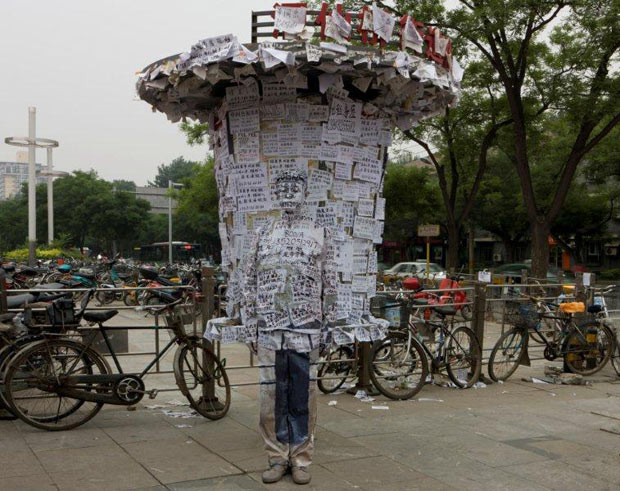
Similarly focused on disappearing landscapes and backgrounds is the politically engaged series “Hide in the City” by the Chinese photographer Liu Bolin. Bolin uses his body as a medium of expression as he blends into the environment like a chameleon.
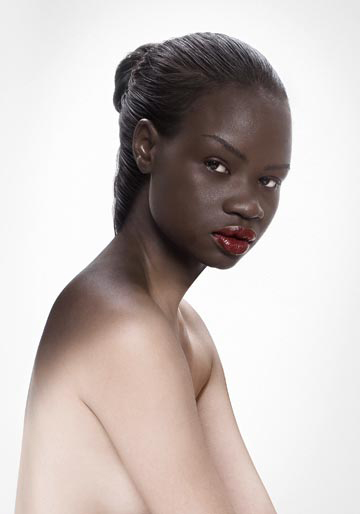
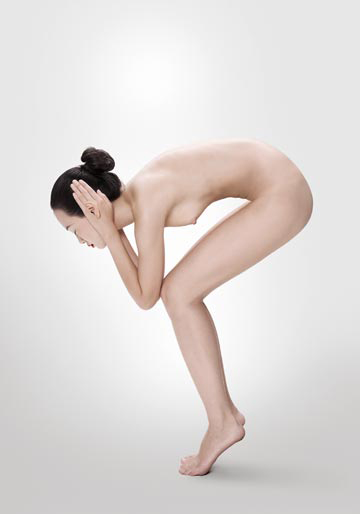
At the Italian Fabbrica Eos Gallery, Giuseppe Mastromatteo‘s photo series “Indepensense 2012” plays on truth and distortion by featuring nude bodies unnaturally intertwined to create vignettes opposing racial and cultural norms. Ruggero Rosfer & Shaokun also shakes up tradition by positing a new universal language that Eastern and Western worlds can share, both geographically and culturally, through the arts.
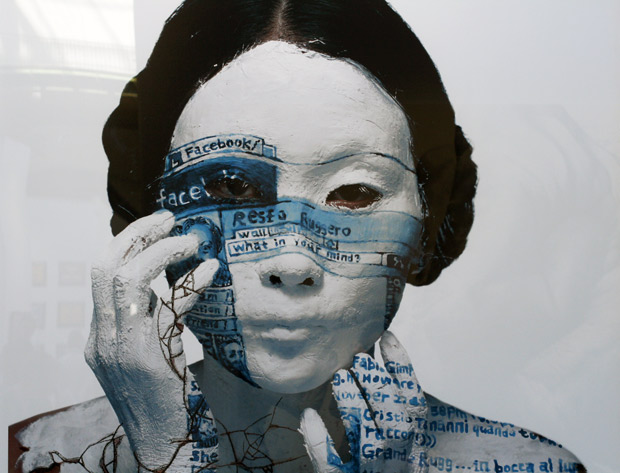
In a reverse approach from explicitly showing intimacy, the landscape itself becomes an intimate subject in a magical series by photographer Markus Henttonen. His photo of decorated trees in Manhattan marks a highlight in his recent body of work exploring relations between cities and their inhabitants.
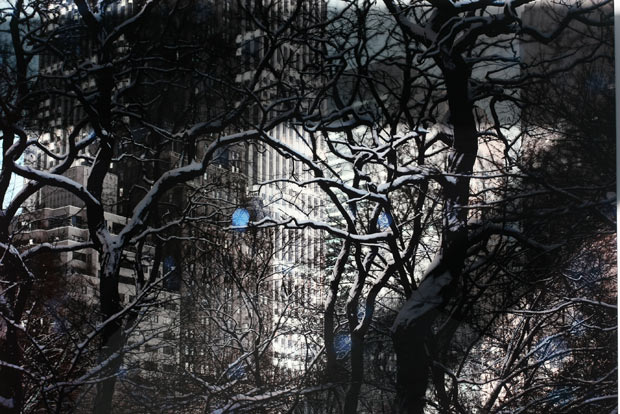
Gerard Traquandi‘s beautifully dark photos feature organic details of twisted branches, bushwoods and transparent petals like nighttime-induced hallucinations. Their magical appeal is obtained by the technique of brushing resin pigments and wax into the photo, imprinting a photosensitive sheet.
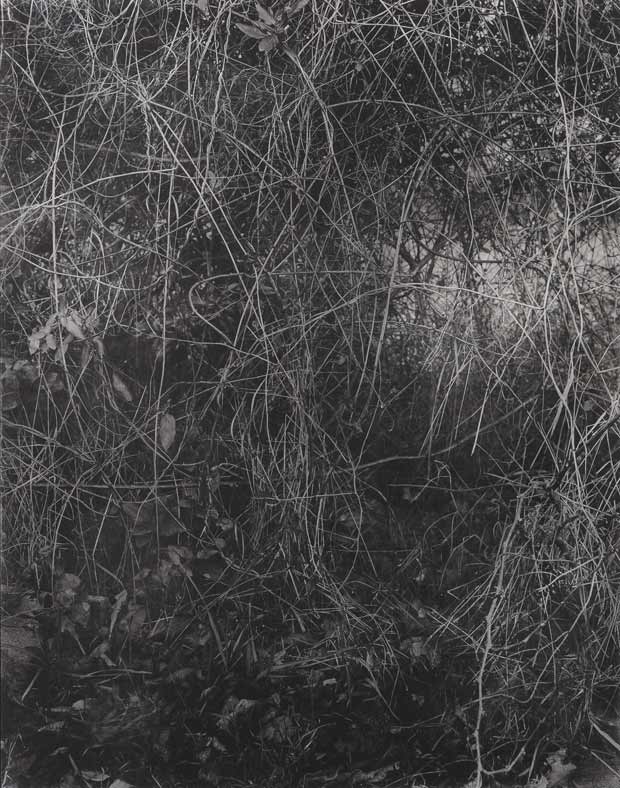
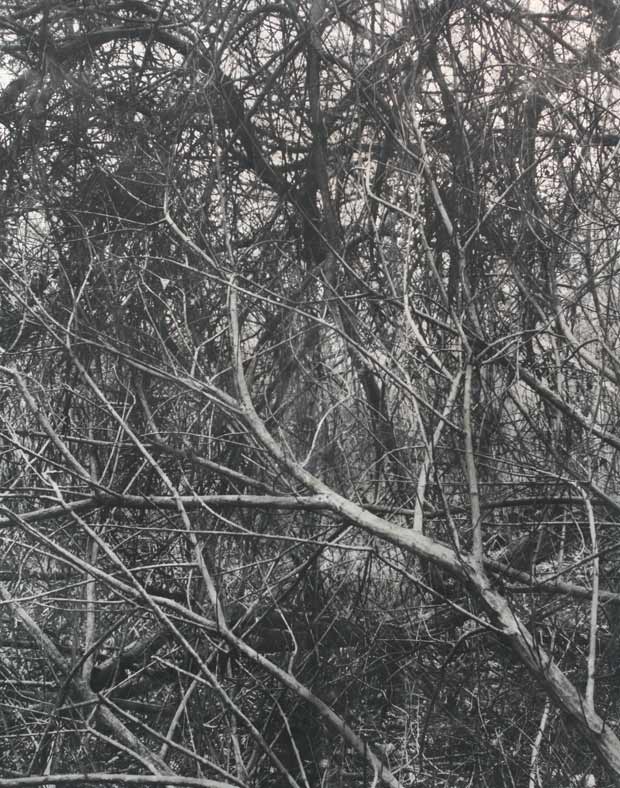
The diptych and triptych style marked another recurring theme of this show. These two- or three-panel pictures result in a panoramic view responding to each other by echoing patterns and forcing the viewer to make the effort to mentally recompose the picture. This technique is brilliantly used by American artist Stephan Crasneanscki—founder of the soundwalk project—in his thoughtful landscapes like “The Woods of Schwarzwald—Martin Heidegger”.

The 2012 World Press third prize winner Alexander Gronsky uses the diptych technique systematically in “Mental Landscapes”, an image enhanced by the dramatic dimensions of a military show in China. Another piece depicts mice spread on rocks in some misty military-occupied scenery, emphasizing contrast while using the same range of colors.
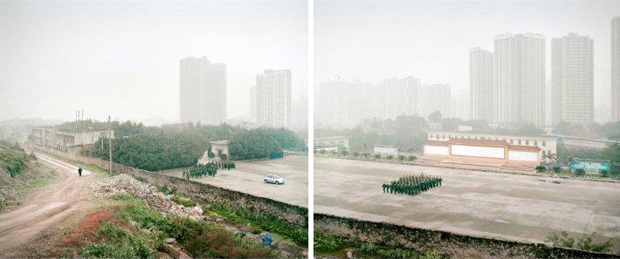
The Parisian-based La Galerie Particulière features diptych and triptych photography by David Hilliard, an artist who uses the technique to tell personal stories in the form of a diary made of sequential imagery. Also included are a series of diptychs by Anne-Lise Broyer that are reminiscent of illustrations in a book, and the Czech Republic’s Inda Gallery presentation of works by Marta Czene, whose stories flow from a similar perspective.
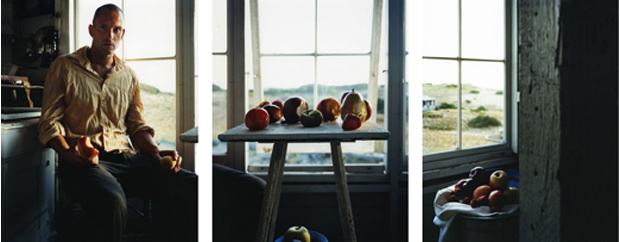
By using a combination of optical illusions and strategic photography, George Rousse creates graphic signs and geometric images within photographs. By playing visual games, his photos appear to feature huge colored frames and objects within the landscapes he shoots, producing a dizzying effect.
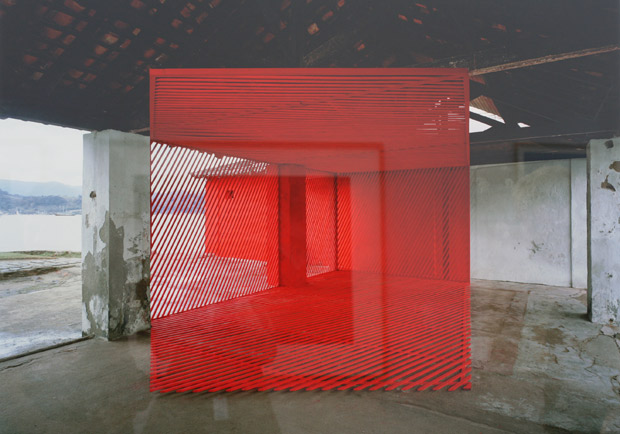
For more information about the 2102 Art Paris Art Fair including comprehensive artists and gallery lists and informative videos check Art Paris Art Fair online.












